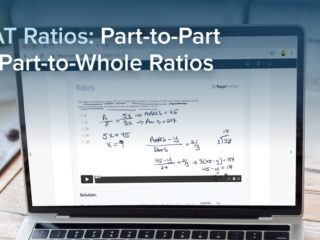Last Updated on May 6, 2023
GMAT OFFICIAL GUIDE DS
Solution:
We are given that r_x = the ratio of robot X’s constant rate to robot Z’s constant rate. If we let A = the rate of robot X and C = the rate of robot Z, we can say:
A/C = r_x
We are also given that r_y = the ratio of robot Y’s constant rate to robot Z’s constant rate. If we let B = the rate of robot Y, we can say:
B/C = r_y
We need to determine whether C is greater than both A and B.
Statement One Alone:
r_x < r_y
Statement one tells us that A/C < B/C. We can multiply both sides by C and obtain:
A < B
Thus rate of robot X is less than the rate of robot Y. However, we still do not know whether the rate of robot Z is greater than the rate of either robot X or robot Y. Statement one is not sufficient to answer the question. We can eliminate answer choices A and D.
Statement Two Alone:
r_y < 1
Since r_y < 1, B/C < 1 or B < C.
Thus, the rate of robot Z is greater than the rate of robot Y. However, we still do not know whether the rate of robot Z is greater than the rate of robot X. Statement two is not sufficient to answer the question. We can eliminate answer choice B.
Statements One and Two Together:
From statements one and two we know that the rate of robot X is less than the rate of robot Y and that the rate of robot Z is greater than the rate of robot Y. Thus, if the rate of robot Y is less than the rate of robot Z, then the rate of robot X must also be less than the rate of robot Z. Therefore, the rate of robot Z must be the greatest.
Answer: C



